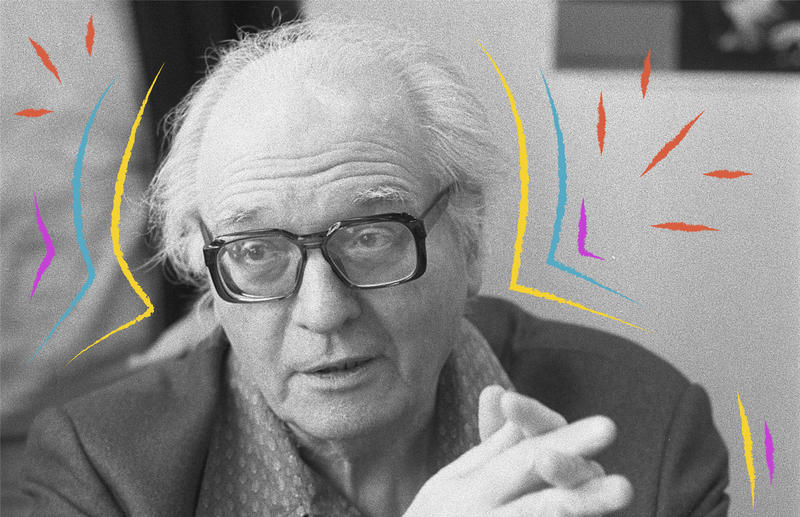
This Saturday night at 8, 91Classical will live broadcast the Nashville Symphony’s performance of Olivier Messiaen’s Turangalîla-Symphonie. Before you tune in, here’s a look at a few of the defining features of Messiaen’s life and career.
He Was Deeply Religious
Born in France in 1908, Messiaen was a devout Catholic throughout his life. As a instrumentalist, he spent over 60 years working as the principal organist at La Trinité Cathedral in Paris. His faith would also profoundly influence his output as a composer, and he created an oeuvre filled with apocalyptic visions, trumpeting angels and ponderings of the afterlife.
“The first idea that I wish to express—and the most important, because it stands above them all— is the existence of the truths of the Catholic faith,” Messiaen once said in an interview when asked what he hoped to communicate through his music.
Below is and excerpt from his 1944 suite for solo piano, Vingt Regards sur l’enfant-Jésus (“Twenty Contemplations on the Infant Jesus”).
He Was Devoted to Nature
In 1972, Messiaen travelled to southern Utah, where he found inspiration in the spectacular landscape to compose
Des Canyons aux Étoiles (“From the Canyons to the Stars”). Not a lover of cities, Messiaen captured the dazzling natural world with colorful orchestration, unexpected timbres and complex harmony.
He was also utterly fascinated with birds, and spent much of his life transcribing birdsong to use in his compositions (more
here on Messiaen and birds).
But above all, Messiaen’s fervor for nature was an extention of his religious devotion. He described Des Canyons as “a religious work, an act of praise and contemplation” that “contains all the colors of the rainbow.” As a composer with chromesthesia (meaning that Messiaen’s music would evoke in him an involuntary experience of color), he was quite literally composing with a rainbow in mind.
He Eschewed Traditional Compositional Techniques
Messiaen’s sound-color associations and attention to birdsong were just a few sources of inspiration for the composer. In drawing from a wide range of influences— everything from Gregorian chant to Gamelan and Indian music to the work of fellow composers like Debussy and Stravinsky— Messiaen forged a compositional voice that was completely his own, and crafted some of the most innovative and challenging music of the 20th century.
Many of Messiaen’s musical breaks from tradition culminate in his Turangalîla-Symphonie. The work features the otherwordly, electronic timbre of the ondes Martenot, fused with non-traditional rhythmic patterns inspired by Indian tala. Throughout the work’s ten movements, Messiaen explores a kaliedoscope of musical colors that express what the composer said the work was all about: love.
More Notable Works
Quatuor pour la fin du temps (“Quartet for the End of Time”), 1941
Drafted into the French army at the outbreak of WWII, Messiaen was captured by Germans in 1940 and made a prisoner of war. While interned, he met a violinist, clarinetist, and cellist among his fellow prisoners.
Quatuor pour la fin du temps was written for the trio with Messiaen at the piano, and premiered in January 1941 to an audience of prison guards and prisoners.
Oiseaux Exotiques (“Exotic Birds”), 1955-1956
Oiseaux Exotiques illustrates Messiaen’s fascination with birdsong and how he used them in his compositions.
Saint François d’Assise, 1983
Messiaen’s only opera is large in scale (it features not one, but three ondes Martenot), but the music intimately captures the composer’s desire, even nearing the end of his life, to dedicate his work to his faith.